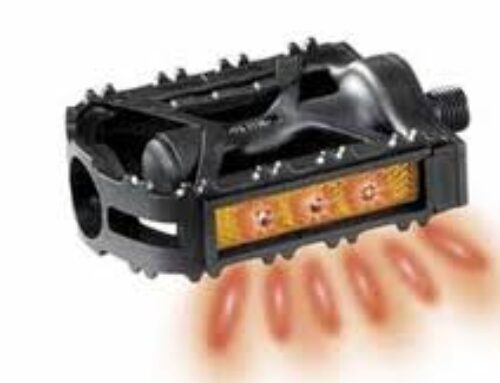What’s slowing you down? No, I’m not referring to the box of doughnuts you inhaled at work, but rather the type of brakes installed on your bike.
Rim Bike Brakes

There are several types of rim brakes, including cantilever, calipers and v-brakes. Rim brakes are ubiquitous on everything from hybrids to road bikes and commuters. Part of their popularity comes from their ease-of-use and affordability. Simply squeeze the brake lever and two rubber friction pads grab the rim.
Caliper bike brakes are found on road bikes. As technology progresses, these bike brakes have become lighter and the stopping power continues to improve as the price of the bike brakes increases. Also referred to as dual pivot side-pull caliper bike brakes, they are less common on commuters because of the tight wheel clearance.
A more adjustable bike brake for various tires is the cantilever. Cantilevers are found on cyclocross bikes, where they provide excellent clearance in muddy conditions, and are also found on some touring and low-end mountain bikes without suspension. While they are easy to maintain, they can be difficult to set up properly.
Finally, v-brakes were created to improve upon the cantilever’s shortcomings. Their major advantages are that they’re much easier to set up and adjust, have good clearance and are compatible on bikes with suspension. They’re often found on commuters and are a reliable choice, especially in dry climates.
Considerations: If you’ve ever ridden in the rain, you know that rim brakes have dicey stopping power in wet weather. The grime that accumulates in brake pads not only wears down the pads, but also grinds away at the rims, creating a physical groove in the wheel that eventually has to be replaced.
Bottom Line: If you don’t frequently ride in wet conditions or only opt for short rides, rim brakes are generally fine.
 Disc Brakes
Disc Brakes
For riders who want to ensure stopping power regardless of what mother nature throws at them, then disc brakes are the only answer. Now commonplace on mountain bikes, disc brakes utilize a metal disc or rotor that’s attached at the wheel’s hub. Squeeze the brake lever and calipers on the frame and fork engage for excellent stopping power. Disc brakes are available in mechanical or hydraulic. Most commuters will find that mechanical discs are easier to set up (they use a traditional brake cable) and maintain and provide plenty of stopping power. But for an extra kick, hydraulic discs are the only bike brake that won’t fade. Just be aware that these bike brakes are more expensive and more difficult to set up and service.
Considerations: Disc brakes require special frame and wheel mounts and are heavier than most rim brakes. Some can interfere with rack and frame mounts and some mechanical discs require long pull brake levers. However, there is no wear to your rims. These bike brakes are easily maintained and powerful enough that some road and cyclocross manufacturers are currently experimenting with them.
Bottom line: If you’re a long-distance commuter who doesn’t mind the added weight or you want a predictable, all-weather braking option, then mechanical disc brakes are the way to go.
 Disc Brakes
Disc Brakes



